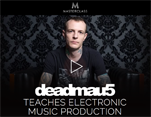Yes
Benaroya Hall, Seattle - Tuesday, November 27, 2007
With two performances by Yes in Seattle so far this year under my belt I arrived at the prestigious Benaroya Hall in late November on a cold, crisp night for a third.
The first performance was in July at a members only event at EMP, which featured the first ever live performance of South Side Of The Sky and the handing over of some Yes memorabilia to the museum's curator. The second was a few days later at the cavernous Paramount Theater, the first date of the first leg of their 2002 US tour which was an awe inspiring performance to an ecstatic sold-out house. And now the Benaroya Hall, home to the Seattle Symphony.
The house manager explains while escorting us down to the stage that it is one of only a few acoustically perfect spaces in the United States, and without the aid of amplification any one of the 2,500 seats occupants can pick up a whisper from the stage.
At this point in the one way conversation Chris Squires stack of Ampeg speaker cabinets look that much more appealing.
As soon as the house lights go down the sound of 2,500 acoustically perfect cheers greets the opening excerpt from Firebird Suite, the same piece of music that opened Yesshows in 1973, and moments later Yes take to the stage. Siberian Khatru is filling the air.
I experienced the first three songs, which also included Magnification, the title track from their latest album, and Don't Kill The Whale while leaning on various parts of the stage taking photographs, and being so close to their monitors found myself noticing vocal lines, chord structures and even some lead lines I've never heard before. Parts that would seem only vaguely recognizable when performed on their own become vital ingredients when combined.
The remainder of the first half of the show was spent in front of the speaker stacks on stage right, next to Steve Howe, and after the brief intermission I was over on stage left, by Rick Wakeman.
An inspiration to many, including yours truly, Rick Wakeman is the quintissential rock keyboard player. He was among the first to use a Moog Synthesizer on stage, which ultimately helped put the VCF into Rock and Roll, so it was a sheer joy to be able to get so close and watch him play this evening.
He's a real showman, renowned not only for his playing skills but also for his multi-keyboard rig that calls for some demanding gymnastics displays during several songs that require multiple keyboard parts, often an event in and of itself. Although his eyes are closed most of the time, primarily while he's playing chords, he'll give his target instrument a few glances, checking LCD readouts or control surface settings, before making his move, my favourite example of which came immediately before the church organ lead solo amid the epic latter section in Awaken.
While putting together the mind boggling combination of chords using a combination of church organ and choral patches on the Roland XV-88, immediately below the GEM ProMega 3, he started scoping out the Korg Triton (88-key Pro version) on his left, repeatedly checking something. Maybe zoning in on which note to hit first. Then all of a sudden his left hand remains holding a bass note on the Roland and his right is over playing the solo on the Korg, and I'm right there seeing the look of absolute total concentration on his face. His eyes are level with the keyboard, tracking the progress of his fingers up towards that amazing pregnant pause at the top of the solo, then back to the Roland.
This time the church organ is full stops, both hands, with embellishments on the Minimoog at the same time, then the full choir patch kicks in. Yes!

